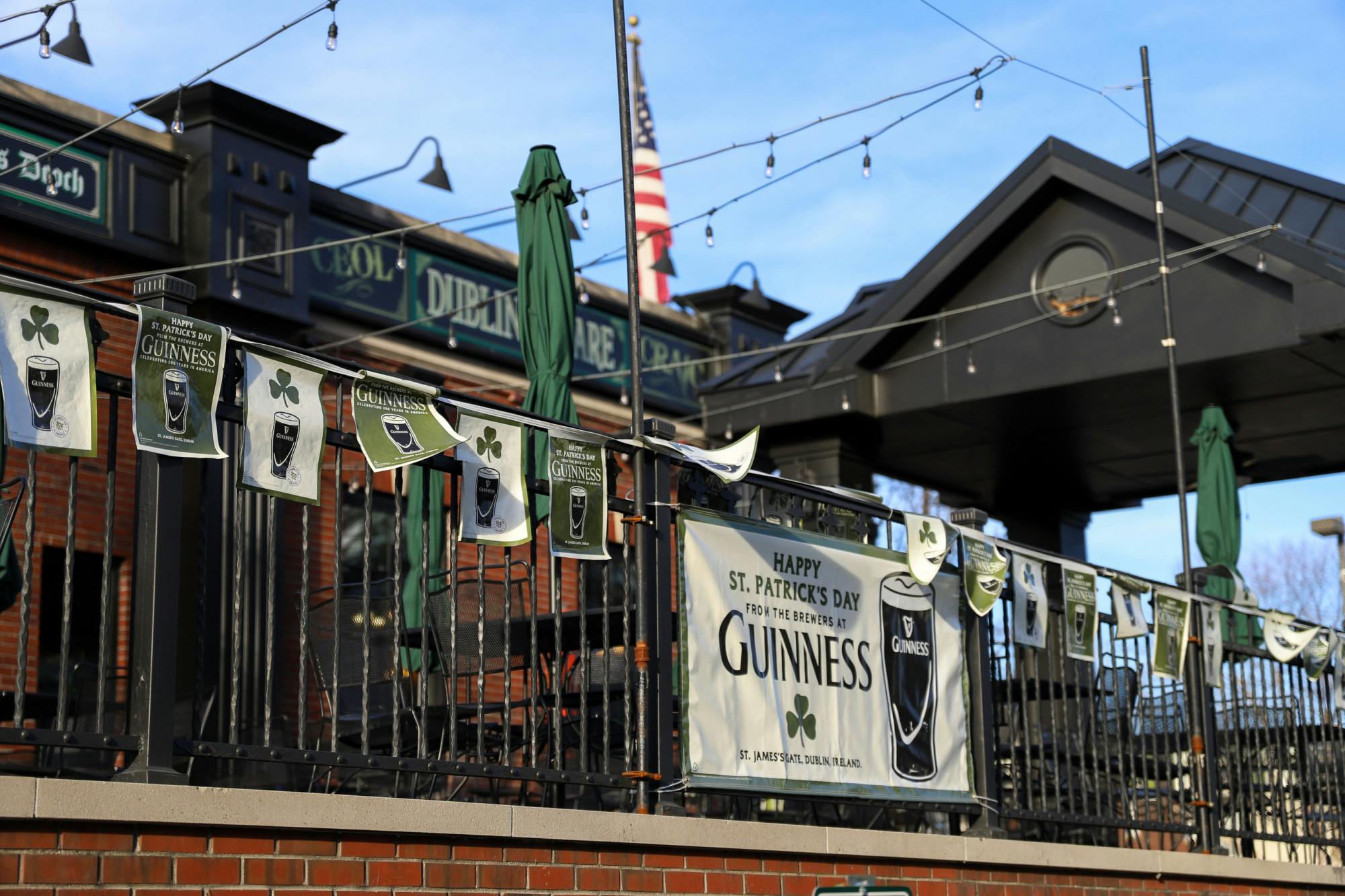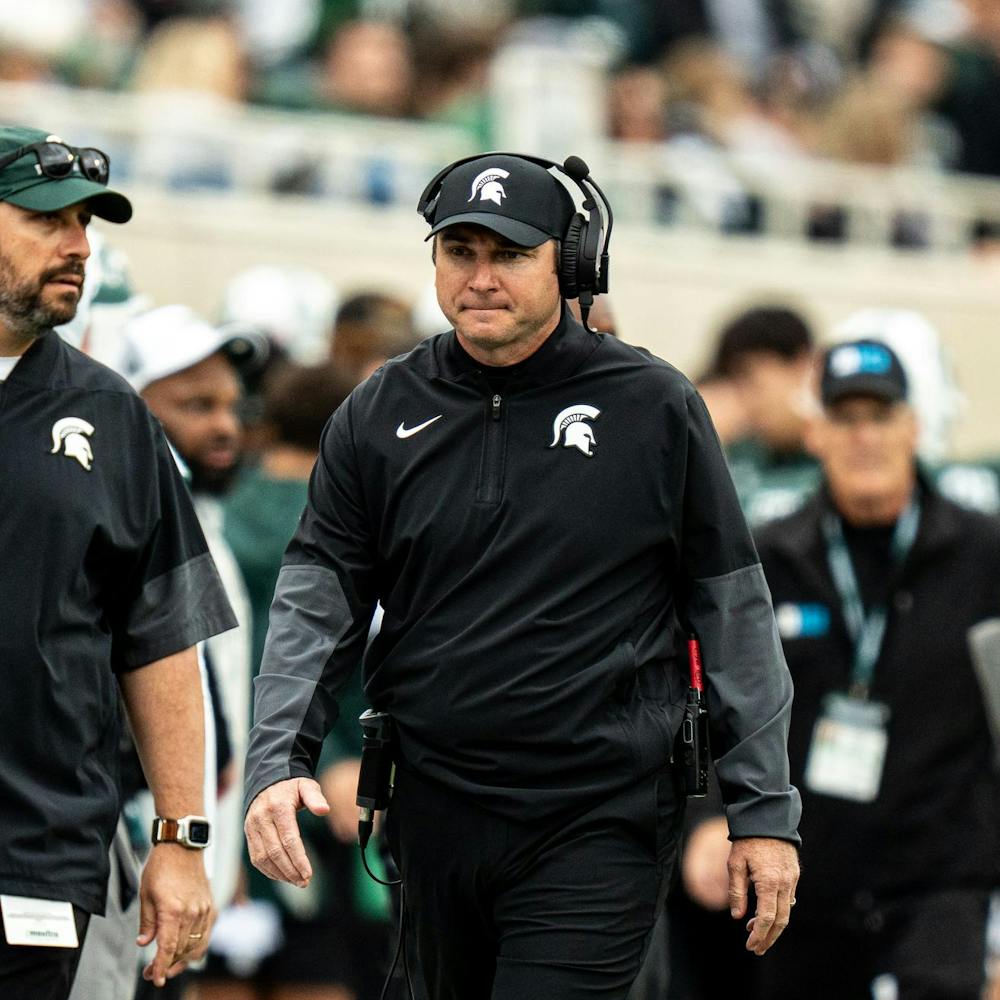Psychology sophomore Ashley Garnett grew up celebrating St. Patrick’s Day by performing with the O’Hare School of Irish Dance in her local parade.
With the pandemic canceling the festivities last March, Garnett and her sisters stepped in front of their home and performed an Irish dance.
“Just to kind of keep the Irish spirit alive even though we can’t really all get together,” she said.
In the years preceding the ongoing global pandemic, Garnett’s family would eat a traditional St. Patrick's Day dinner at an Irish pub in Ann Arbor owned by her cousin. While the pandemic has canceled the parade this year as well, that won’t stop Garnett and her family from celebrating their Irish heritage at home.
“I’m still gonna probably come home and have like a traditional meal," Garnett said. "My Nana will always probably make corned beef and cabbage for all of us. … Just basically family, Irish music and a little bit of traditional dancing."
While Americans find time to celebrate the holiday around working hours, St. Patrick’s feast day is a federal holiday in Ireland and it’s considered the first major holiday after Christmas and New Year’s.
St. Patrick is honored today as one of the three patron saints of Ireland, but he was actually from Britain. At age 16 he was kidnapped and enslaved in Ireland, where he spent 6 years. During this time he became a devout Christian.
Eventually, he returned to Britain, where he experienced a vision where the Irish were calling him back to the island. In 432 A.D., he was consecrated as a bishop and adopted the name Patricius before returning to Ireland as a missionary.
Over a thousand years later the holiday is quite secular, but many of the symbols commonly associated with it have their roots in the story of St. Patrick as well. Shamrocks, for example, the national plant of Ireland, were used to explain the Trinity to the Irish pagans.
There are several legends in which St. Patrick appears, and it’s even said he baptized Ireland’s first Christian king, Aengus of Munster at the Rock of Cashel.
St. Patrick’s Day is a very family-oriented and inclusive holiday in Ireland, and a lot of traditions are centered around young people.
Suzanne Shorten, program director of Summer at University College Dublin, has fond memories of celebrating St. Patrick’s Day as a child.
“I think my best memory is, probably as a child, going to Mass in the morning with my parents, singing at the end, and my mother putting my green ribbons in my long hair," Shorten said. "Then my father bringing me to the St. Patrick’s parade in Dublin and sitting on my father’s shoulders to see the parade."
Ireland is famous for its agriculture and seafood, so a wide variety of traditional foods are served for St. Patrick’s Day dinner.
"You are going to get the best possible fish and the freshest fish because it's caught in local waters," Shorten said. "It doesn't have to travel that far. ... Ireland will be famous for oysters, and they're exported all over the world. It's like everything else, you are not going to get anything as possibly as fresh as you would get on the island of Ireland because it's maybe caught in the morning."
Approximately 10 percent of Americans identified as having Irish lineage in the 2016 census, with the majority residing in the Northeast. The cultural ties between Ireland and the United States are seen in the annual tradition of a St. Patrick's Day meeting between the president of the United States and the prime minister of Ireland.
A Waterford Crystal bowl of shamrock is given to the president during the meeting. Due to the COVID-19 pandemic, the meeting between the two leaders will be virtual but the bowl of shamrock will be on President Biden's desk during the conference. The Waterford Crystal company also has a hand in the New Year's Eve Times Square ball drop. Certain panels of the ball are changed each year, and the panels are created in Ireland and flown to New York City.
Much of the connection between Ireland and the U.S. is due to the mass emigration of Irish people during the Irish Potato Famine between 1845 and 1849. Around 2 million people emigrated from Ireland, and about a million died from typhus or starvation. Between 1841 and 1850 almost half of all immigrants to the U.S. were Irish.
"We had approximately, living on the island of Ireland, we had 8 million people, and in four years we were reduced to 4 million people," Shorten said. "So we'd one of the biggest famines ever in the world, happening in our own land. And the Irish people, so the 4 million people, they either died or they emigrated, about 2 million I would say emigrated, and it was forced emigration, and a lot of them went to the USA."
The Irish families that arrived in Boston and New York during this period generally stayed in their own circles and married each other, which accounts for the large Irish presence in the New England region, Shorten said.
Support student media!
Please consider donating to The State News and help fund the future of journalism.
Garnett's plans for a traditional dinner and spending time with family are not much different than what people will be doing to celebrate in Ireland.
"You might have corned beef with potatoes and cabbage, and then you might watch a film with the family, a nice Irish-based film," Shorten said. "And that's really it, it's simple, it's family-based, but it's very inclusive. ... We're not a rich country, so people didn't have a lot, so how they made entertainment was through storytelling, and singing and being together."
Discussion
Share and discuss “Importance of St. Patrick's Day: celebrating Irish culture and traditions” on social media.







